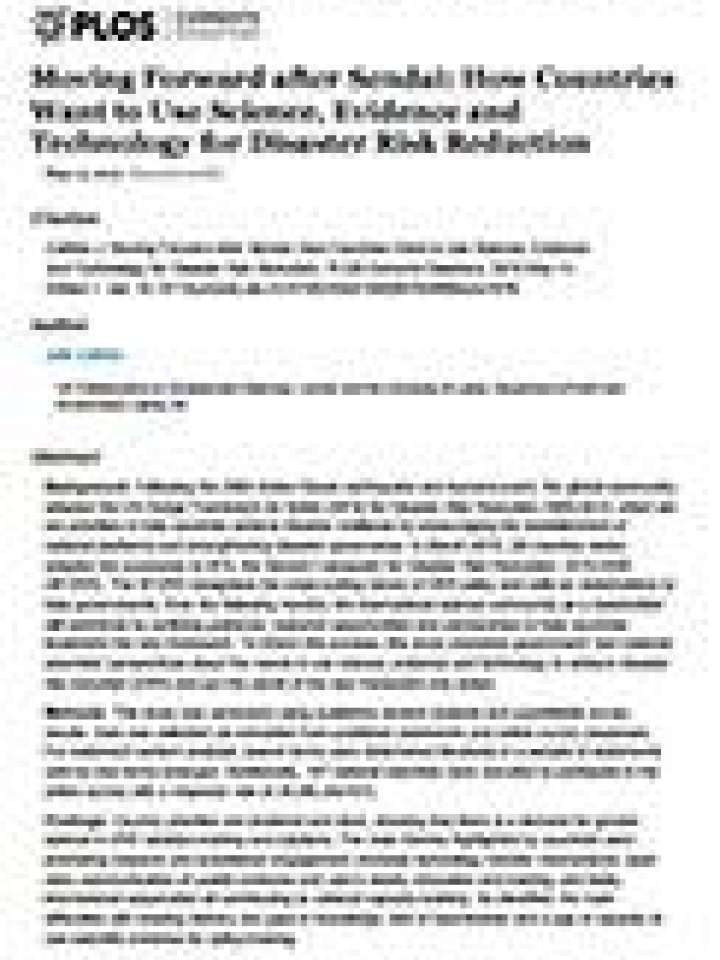Moving forward after Sendai: how countries want to use science, evidence and technology for disaster risk reduction
PLOS Currents Disasters. 2015 May 14 . Edition 1. doi: 10.1371/currents.dis.22247d6293d4109d09794890bcda1878.
This study examines governments' and national scientists' perspectives about the needs to use science, evidence and technology to achieve disaster risk reduction (DRR) and put the words of the new framework into action.
The study was conducted using qualitative content analysis and quantifiable survey results. Data was collected via extraction from published statements and online survey responses. For statement content analysis, search terms were determined iteratively in a sample of statements until no new terms emerged. Additionally, 167 national scientists were recruited to participate in the online survey with a response rate of 26.3% (44/167).
Findings: Country priorities are clustered and clear, showing that there is a demand for greater science in DRR decision-making and solutions. The main themes highlighted by countries were promoting research and practitioner engagement; increase technology transfer mechanisms; open data; communication of usable evidence and user's needs; education and training; and lastly, international cooperation all contributing to national capacity building. As identified, the main difficulties with existing delivery are gaps in knowledge, lack of coordination and a gap in capacity to use scientific evidence for policy-making.
Conclusions: Countries and organisations have identified a range of science and technology related needs, including through the preparatory and drafting process for the Sendai Framework for DRR. Across regions and development levels, countries are seeking to address the gaps they face in scientific capacities and information. It is hoped that understanding these priorities and challenges will help decision-makers and scientists in developing the implementation plan to consider how science, technology and innovation can be enabling factors for DRR. An implementation plan of action underpinned by scientific evidence has the potential to save lives, more accurately target investment, and contribute to greater resilience over the coming decades.
Explore further
